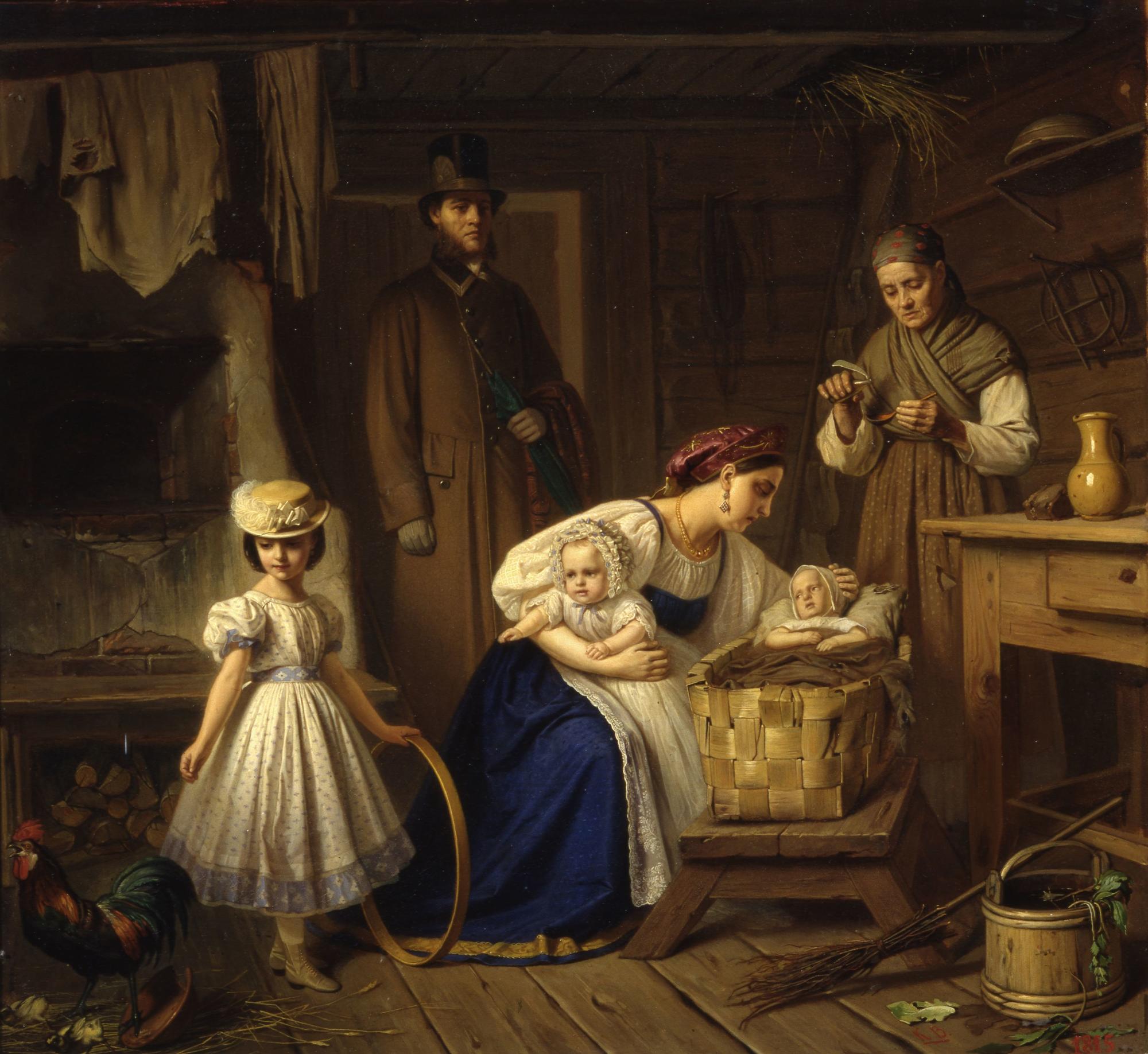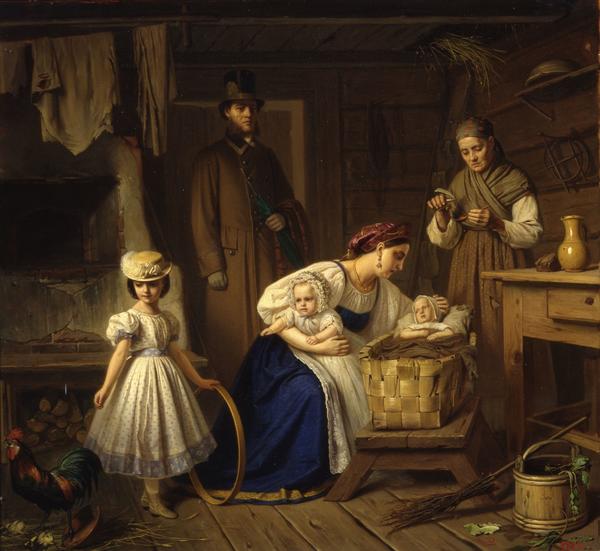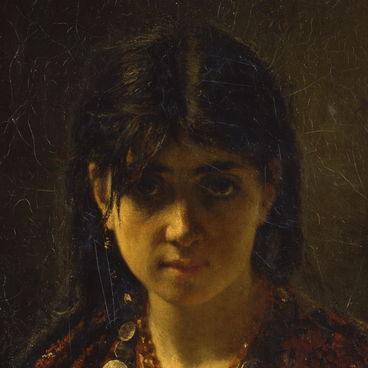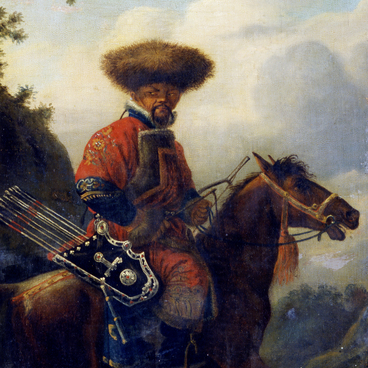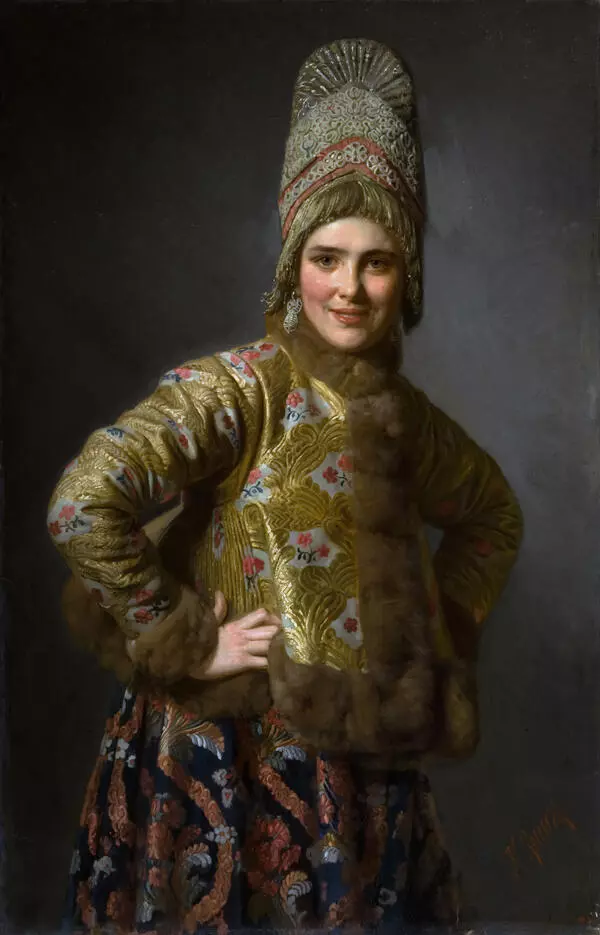In the second half of the 19th century the routine genre becomes especially popular in Russian painting. The subject of the genre painting is the everyday public and private life of a person, the feelings that arise through communication with other people, the domestic environment. Embodying the images and themes that are present in life itself, genre paintings always have a specifically national character, most clearly characterize the artist’s attitude to contemporary reality.
Professor of historical and portrait painting C.B. Wenig, well known at certain time for costumed paintings on religious and historical subjects, was not bypassed by the affection to the routine genre as well. The painting Wet Nurse visits her Child tells about unfortunate fate of a mother torn from her own child and due to breastfeed her master’s kid. We see a corner of a village house, the miserable ambiance of which clearly shows the viewer the plight of its inhabitants. Numerous details, such as a peeling, smoked stove, hay hanging from the loft, shabby tatters on a rope, scanty food on the table (a piece of rye bread) indicates us their extreme need. The artist tells about the beauty and richness of the material world of the privileged class representatives with the same accuracy, love and care he painted the details of peasant life. The details of the toilet of the cute little girl, similar to a doll, are painted carefully.
With a dominant ocher-brown natural palette in the house ambiance and the clothes of the old woman and the child, the color flashes with a thick blue accent of the wet nurse’s sundress. Her outfit is gorgeous: a juicy blue sundress with a gold edging on the hem falls in soft folds, like antique clothes; there is a red-pink kokoshnik with gold embroidery on her head. The wet nurse herself with a mournful expression on her face theatrically sighs over the baby, bending over in a beautiful pose. The right classic profile of the young woman as if descended from the ancient antico.
The painting art, turning to prosaic plots, posed for artists new tasks of developing other principles of composition and color. In the painting of Wenig, subject to all formal signs, the essential is missing – vitality. And it could not appear, since the artist had no sufficient knowledge about common people life, observations of the material.
